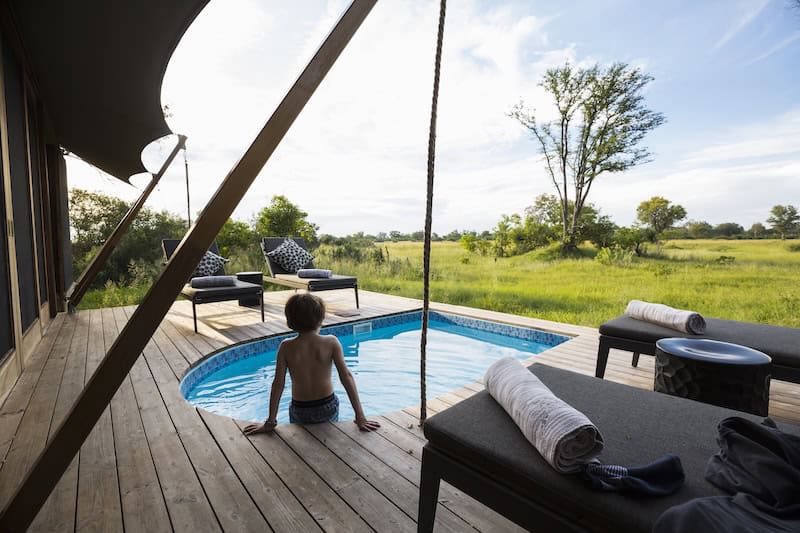How to Plan a Multigenerational Trip: 10 Tips for Stress-Free Family Travel
Last Updated on September 28, 2025 by Amylee Silva
The ultimate guide to orchestrating unforgettable family adventures that unite grandparents, parents, and children in perfect harmony
Traveling with grandparents, parents, and kids is one of the most rewarding ways to create memories that last a lifetime. Families often spend valuable time and resources to make the most of their multigenerational trips, ensuring every moment is meaningful and memorable. But planning a multigenerational trip also comes with unique challenges: different ages, different budgets, different energy levels, and different needs. With the right approach, you can pull off a trip that makes everyone happy — without losing your sanity in the process.
The secret lies in understanding that multigenerational travel isn’t just about finding a destination everyone will enjoy — it’s about creating a shared family vacation experience that strengthens family bonds while respecting each generation’s comfort zone. From navigating budget conversations to coordinating schedules across multiple households, successful family travel requires both diplomatic skills and practical expertise.
Here’s how to make it happen.
Looking to Plan Your Family’s Perfect Multigenerational Trip?
Coordinating grandparents, parents, and kids can be overwhelming, but you don’t have to do it alone. Our Custom Tours team specializes in crafting personalized itineraries that balance comfort, adventure, and connection for every generation.
Start planning your custom multigenerational tour today »
How to Plan a Multigenerational Trip in 10 Easy Steps
Step 1. The Family Summit: Getting Everyone on the Same Page
Step 2. Budgeting for Multigenerational Travel
Step 3. Travel Dates That Work for Everyone
Step 4. Take Advantage of Group Travel Benefits
Step 5. Choosing the Right Accommodation
Step 6. Destination Decisions: Visas, Vaccines, and Practical Considerations
Step 7. Creating the Perfect Itinerary
Step 8. Packing and Preparation: Lists That Actually Work
Step 9. Managing Expectations
Step 10. Special Considerations for Unique Situations
Why Multigenerational Trips Matter

Multigenerational travel is a meaningful way for extended family to come together and create memories that last a lifetime. Bringing together family members of all ages, from energetic kids to doting grandparents, a multigenerational vacation offers a unique opportunity to strengthen family bonds and enjoy quality time away from the routines of daily life. These trips allow families to share new experiences, discover different cultures, and build traditions that can be cherished for years to come.
Whether you’re planning a relaxing beach getaway, an adventurous road trip, or a city escape packed with cultural experiences, multigenerational travel ensures that everyone—from parents to kids to grandparents—has a chance to connect and have fun. By thoughtfully planning a trip that takes into account the interests and needs of each age group, families can create a great trip that everyone will remember fondly. The joy of spending time together, exploring new destinations, and making memories is what makes these trips so special for families of all shapes and sizes.
1. The Family Summit: Getting Everyone on the Same Page
Before diving into destinations and dates, start with a family meeting — either in person or via video call. This initial conversation sets the foundation for everything that follows and prevents misunderstandings down the road. It’s important to get the entire group involved in the planning process, making sure everyone—siblings like your sister or sister-in-law, and spouses such as your husband—has a voice and feels included from the start.
Essential Discussion Points:
- Travel dates and duration preferences
- Budget comfort zones for each family unit
- Must-have experiences vs. nice-to-haves
- Mobility considerations and accessibility needs
- Accommodation preferences and room arrangements
- Activity interests across age groups
Pro Tip: Create a shared digital document or group chat where everyone can contribute ideas and stay updated on planning progress. This keeps communication transparent and ensures no one, including extended family members like your sister, sister in law, or husband, feels left out and that everyone is involved in the decision-making process.
2. Budgeting for Multigenerational Travel: Navigate the Money Conversation
Money can be a sensitive subject when you’re coordinating across three (or more) generations. Start with transparency: set expectations early about who’s paying for what, and decide if you’ll pool funds or split costs. Be sure to communicate with in-laws and other extended family members about preferences, schedules, and expectations to avoid misunderstandings.
Common Budget Structures:
- Each family pays their own way: Simplest approach, but may limit destination choices based on the most budget-conscious family
- Grandparents sponsor the trip: Often works well when grandparents want to treat the family but need input on planning
- Cost-sharing by category: Split accommodations equally, but each family pays their own meals and activities
- Tiered contributions: Families contribute based on their financial capacity, with clear agreements upfront
Average per-person trip costs (excluding flights) by destination:
- Italy or Spain: $200–$300 per person, per day (often higher in peak season July and August)
- Costa Rica or Bali: $150–$250 per person, per day
- Safari in Africa: $400–$800 per person, per day (all-inclusive lodges)
- Japan or Singapore: $250–$400 per person, per day (Singapore can exceed this, depending on lodging/food choices)
- India or Sri Lanka: $100–$200 per person, per day (Accurate budget for mid-range; luxury options much higher)
- Egypt or Morocco: $150–$300 per person, per day
- Iceland or Sweden: $300–$450 per person, per day
How money is spent can vary widely—accommodations (especially booking multiple rooms for large families), activities, and meals often make up the bulk of the budget. Consider what experiences will be most meaningful for your group and allocate funds accordingly.
Hidden Costs to Consider:
- Travel insurance (especially important for older travelers and children)
- Visa fees and expedited processing
- Specialized equipment rentals (wheelchairs, strollers, car seats)
- Tips for private guides and drivers
- Emergency medical coverage abroad
- Comfort upgrades that become necessary during the trip
- Coordinating with in-laws regarding shared expenses or preferences
Build in extra cushion for grandparents’ comfort and kids’ entertainment, whether that means upgrading to rooms with more space, booking multiple rooms for large families, hiring private guides, or budgeting for kid-friendly tours that keep little ones engaged.
3. Timing is Everything: Travel Dates That Work for Everyone

Coordinating schedules across multiple generations requires strategic thinking about work commitments, school calendars, and seasonal preferences. Special planning is especially important for a family’s first trip together, as it sets the tone for future multigenerational adventures and creates lasting memories.
Avoid Peak School Holidays. Flights and accommodations skyrocket during school breaks. Instead, aim to travel just before or after peak holidays when prices drop significantly, and destinations are less crowded.
Educational Travel Opportunities: Talk to your children’s teachers well in advance:
- Request homework that can be completed during travel
- Propose educational components that align with curriculum
- Document cultural experiences for school presentations
- Consider destinations that offer hands-on learning opportunities
Seasonal Considerations by Generation:
- Grandparents: Often prefer milder weather and fewer crowds
- Parents: May need to coordinate vacation time and work schedules
- Teenagers: Summer breaks offer the most flexibility
- Young children: Shoulder seasons often provide the best balance of weather and pricing. For families with young children or elderly grandparents, a three-night stay can be a manageable and enjoyable option.
Optimal Planning Timeline:
- 12-15 months ahead: Initial family discussions and destination selection
- 9-12 months ahead: Book flights and primary accommodations
- 6-9 months ahead: Secure group tours, restaurant reservations, and special experiences
- 3-6 months ahead: Finalize detailed itineraries and handle visa applications
- 1-3 months ahead: Confirm all bookings, purchase travel insurance, and create packing lists
When planning, consider trips that last several weeks to allow for a more immersive experience and to accommodate the interests of all generations.
4. Take Advantage of Group Travel Benefits
Multigenerational trips usually mean traveling in a group of 6–12 people — the sweet spot for group rates and special services.
Airlines and Group Bookings:
- Some airlines do offer small group discounts, but perks like flexible deposits and name changes are more common
- Flexible deposits allow you to hold seats while finalizing names
- Name changes are often allowed at lower cost when booked as a group
- Seat assignments can be coordinated to keep families together
- Special meal requests can be handled more efficiently
Tours and Activities:
- Many providers offer discounts starting at 8–10 travelers
- Private guides can often accommodate groups for the same price as standard tours
- Cultural experiences like cooking classes often provide group rates
- Skip-the-line access becomes more valuable with larger groups
- Some group travel options, such as cruises, plan activities for you, so you don’t have to worry about organizing entertainment or schedules.
Ground Transportation:
- Private vans or buses are often cheaper than multiple rental cars
- Eliminates the stress of coordinating multiple vehicles
- Allows for family bonding time during transfers
- Professional drivers familiar with local conditions increase safety
Group Dining Benefits:
- Restaurants often provide private dining rooms for large groups
- Set menus can simplify ordering for diverse palates
- Advanced notice allows for dietary restrictions and special occasions
- Group reservations ensure everyone eats together
- Family-friendly resorts and hotels may offer a kids club, giving children a fun place to play while adults enjoy meals or relax.
5. Choosing the Right Accommodation: Where Comfort Meets Connection

Accommodation choices can make or break a multigenerational trip. The key is balancing togetherness with privacy, ensuring everyone has their own space while creating opportunities for family time.
Villa and Vacation Rental Advantages:
- Multiple bedrooms provide privacy for each family unit
- Shared common areas encourage family interaction
- Kitchens allow for family meals and accommodate dietary restrictions
- Often more cost-effective for large groups
- Laundry facilities essential for longer trips with children
Hotel Considerations:
- Request interconnecting hotel rooms or family suites
- Consider booking separate rooms for grandparents or teenagers who may need extra quiet or independence.
- Ensure accessibility features for grandparents (elevators, grab bars, ramps)
- Look for properties with multiple dining options
- Kid-friendly amenities like pools, kids’ clubs, or cultural workshops
- Concierge services to help coordinate activities and transportation
- Prioritize hotels that offer plenty of opportunities for pool time, as relaxing by the pool is a great way for families to unwind and bond together
Essential Amenities to Prioritize:
- Accessibility features: Elevators, ramps, ground-floor rooms, accessible bathrooms
- Childproofing: Safety latches, outlet covers, pool fencing
- Multiple bathrooms: Prevents morning rush hour conflicts
- Air conditioning/heating: Comfort preferences vary significantly by age
- Reliable WiFi: Essential for staying connected and handling travel logistics
- Storage space: Multiple generations mean more luggage
- Choose accommodations where essential amenities are within easy reach for all generations, making it convenient for everyone to access what they need without hassle
Service Considerations:
- Babysitting services: Allow parents a night out while grandparents relax
- Laundry facilities: Essential for trips longer than a week
- Room service: Provides flexibility for different meal preferences and schedules
- Concierge assistance: Invaluable for booking activities and handling special requests
6. Destination Decisions: Visas, Vaccines, and Practical Considerations

Before locking in a destination, research the practical requirements that could impact your travel plans. Theme parks can be a fun option for families with kids, but they may not always appeal to older travelers, so balance is key when choosing activities that suit all generations.
Visa Requirements by Popular Destinations:
- Visa-free for US citizens: Most of Europe, Japan, Singapore, Costa Rica
- Visa on arrival: Egypt, Sri Lanka (for many nationalities)
- Advance visa required: India, Vietnam, Morocco (some nationalities)
- Special considerations: Some countries require visas to be obtained at specific consulates
- Convenient departures: For US-based families, starting trips from the east coast can offer easier access to both domestic and international destinations.
Types of Destinations:
- Road trips: Flexible and customizable, road trips allow families to explore multiple destinations at their own pace, making them ideal for multigenerational travel.
Health and Safety Preparations:
- Routine vaccinations: Make sure all travelers are up to date on standard childhood and adult immunizations (MMR, Tdap, polio), plus seasonal flu shots.
- Destination-specific requirements: Some regions may require or strongly recommend additional vaccines (e.g., yellow fever for parts of Africa and South America, Japanese encephalitis for rural Asia, hepatitis A and B depending on the country).
- Malaria prevention: Consult a travel medicine specialist about prophylaxis if visiting risk areas
- Travel insurance: Essential for international travel, especially with multiple generations
Age-Specific Considerations:
- Infant travel: Passport requirements, car seat regulations, medical considerations
- Elderly travelers: Medical clearance for long flights, medication management abroad
- Prescription medications: Ensure adequate supplies and research pharmacy availability
- Emergency contacts: Local medical facilities and embassy information
7. Creating the Perfect Itinerary: Balance and Flexibility
The art of multigenerational travel lies in creating itineraries that offer something for everyone without overwhelming any particular age group. When planning for three generations—including grandparents, parents, and children—it’s important to ensure that time is spent balancing structured group activities with flexible downtime.
The 60-40 Rule: Plan about 60% of your time with structured, group activities, leaving 40% for flexibility, rest, and individual preferences.
Daily Rhythm Strategies:
- Morning activities: Take advantage of grandparents’ early rising habits
- Afternoon rest time: Essential for young children and appreciated by all ages; be sure to schedule quiet time for rest and relaxation
- Evening flexibility: Some family members can rest while others explore
- Alternating intensity: Follow active days with relaxed ones
Activity Planning by Generation:
- Universal appeal: Scenic transportation, cultural performances, wildlife viewing, and a family cooking course or similar educational activity that everyone can enjoy together
- Kid-specific additions: Interactive museums, hands-on workshops, playgrounds, and activities that engage the oldest kids as well as younger children
- Adult interests: Wine tastings, historical sites, photography opportunities
- Senior-friendly options: Comfortable seating, accessible locations, cultural significance, and meaningful experiences for the grandparent in the group
Sample Day Structure:
- 9:00 AM: Group breakfast and departure
- 10:00 AM – 12:00 PM: Morning cultural activity (temples, museums, markets)
- 12:00 PM – 2:00 PM: Leisurely lunch with local cuisine
- 2:00 PM – 4:00 PM: Rest time or optional activities
- 4:00 PM – 6:00 PM: Scenic activity (gardens, viewpoints, easy walks along the beach or through local neighborhoods)
- 6:00 PM – 8:00 PM: Family dinner and evening relaxation
8. Packing and Preparation: Lists That Actually Work
Packing for multigenerational travel requires coordination to avoid duplicating items while ensuring everyone’s needs are met.
Shared Items to Coordinate:
- First aid supplies and medications
- Electronics and chargers
- Travel adapters and converters
- Laundry supplies and toiletries
- Entertainment for travel days
- Snacks and comfort foods
Age-Specific Packing Essentials:
- For grandparents: Comfortable walking shoes, extra medications, travel insurance documents
- For parents: Copies of important documents, emergency contact lists, entertainment for children
- For children: Favorite comfort items, age-appropriate activities, extra clothing changes
Documentation Checklist:
- Passports with appropriate validity periods
- Visa documents and entry requirements
- Travel insurance policies and emergency contacts
- Medical information and prescription lists
- Copies of all documents stored separately and digitally
- Emergency contact information for all family members
9. Managing Expectations: Communication During the Trip
Even the best-planned trips require ongoing communication and flexibility once you’re on the ground.
Daily Check-ins:
- Morning briefings about the day’s activities
- Evening debriefs to address any issues
- Flexibility to modify plans based on energy levels and interests
- Clear communication about meeting times and locations
Conflict Resolution Strategies:
- Acknowledge that not every activity will appeal to everyone
- Have backup plans for different energy levels
- Designate a “trip leader” for each day to make quick decisions
- Create opportunities for smaller group activities within the larger family
Technology and Communication:
- Share contact information and meeting points
- Use group messaging apps for coordination
- Establish check-in times for safety
- Plan for different communication preferences across generations
10. Special Considerations for Unique Situations
Traveling with Infants and Toddlers:
- Research destination-specific baby supplies availability
- Plan for feeding schedules and nap times
- Consider time zone adjustment strategies
- Pack extra supplies for delays and emergencies
Accessibility and Mobility Considerations:
- Research wheelchair accessibility at destinations
- Consider mobility aid rentals at the destination
- Plan for rest stops and accessible transportation
- Communicate needs clearly when booking accommodations and activities
Dietary Restrictions and Food Allergies:
- Research local cuisine and ingredient availability
- Translate dietary restrictions into local languages
- Identify medical facilities in case of allergic reactions
- Pack familiar foods for picky eaters or special dietary needs
Creating Lasting Memories through Cultural Experiences
One of the most rewarding aspects of a multigenerational vacation is the chance to share cultural experiences that bring the whole family together. Whether it’s rolling up your sleeves for a hands-on cooking class, sampling local food at a bustling market, or exploring the art and history of a new city, these moments create lasting memories and spark meaningful conversations among family members of all ages.
Destinations like Costa Rica and Northern Italy are perfect for families seeking a blend of adventure and culture. Imagine the fun of learning to make pasta from scratch in a sunlit Italian kitchen, or spotting wildlife together in a lush national park. By involving both younger kids and older kids in the planning process, families can ensure that everyone’s interests are represented—maybe the younger ones want to try zip lining, while the adults are excited for a wine tasting or a museum visit. The key is to choose activities that encourage participation from the whole family, making every day of your trip a new opportunity for discovery, laughter, and connection.
Making Multigenerational Travel a Tradition
Turning multigenerational travel into a family tradition is a wonderful way to nurture relationships and create a sense of continuity across generations. By setting aside time each year—whether it’s a full week of vacation or a series of day trips—families can look forward to reconnecting, exploring new places, and making memories together. Establishing a regular tradition takes the stress out of the planning process, as everyone knows when and how the next trip will happen, making it easier to coordinate schedules and save time on logistics.
Some families choose to revisit a favorite destination, while others prefer to try something new each year. No matter the approach, the most important part is spending quality time together—whether you’re relaxing on a secluded beach, hiking through a national park, or simply sharing stories over dinner. By making multigenerational travel a recurring event, families can build a legacy of adventure, laughter, and togetherness that will be cherished for generations to come.
Final Thoughts: Embrace the Journey
Multigenerational trips take more organization than a typical vacation, but the rewards far exceed the extra effort. Start planning 9–12 months in advance to secure group rates, better flight schedules, and ideal accommodations. But once you’re there, flexibility becomes your greatest asset — not every activity will suit every age group, and that’s perfectly okay.
The goal isn’t to create a perfect trip where everyone loves every moment. Instead, aim to create shared experiences that allow different generations to see the world through each other’s eyes. Watch grandparents share stories that bring history to life, see parents experience destinations through their children’s wonder, and observe how travel creates bonds that last long after the suitcases are unpacked.
Remember that the most meaningful moments often happen during unplanned times — the spontaneous gelato stop in Italy, an impromptu dance lesson in Spain, or a quiet conversation during a long train ride. These small, unexpected experiences are what transform a well-organized trip into a treasured family legacy.
With smart planning, clear communication, and a healthy dose of flexibility, your multigenerational adventure will be less about managing logistics and more about celebrating the beautiful complexity of family — creating laughter, connection, and shared memories that span generations.
The world is waiting for your family story. Now you have the tools to write it together.
Ready to Plan Your Family’s Perfect Multigenerational Trip? Get in touch with our Bespoke Travel department.






